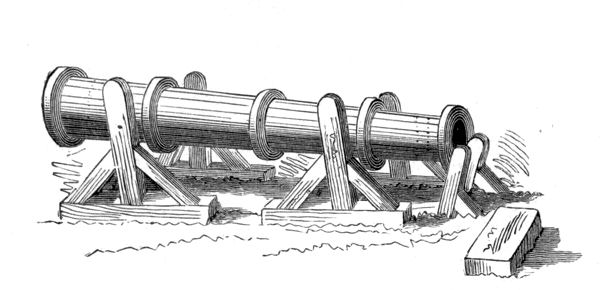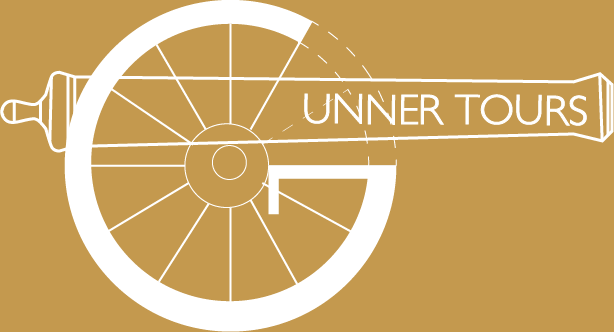
The battle of Crécy (1346), alongside Agincourt (1415) has gone down in history as the triumph of the English foot soldier armed with the longbow over the French Knights. It has been known for a long time that Edward III had four cannons with his army, but their role on the battlefield has been dismissed, as having no effect beyond announcing that fire-power had arrived on the battlefield. However, in a speech to the Battlefields Trust, Professor Michael Prestwich argued that we should re-examine our interpretation of the Battle of Crécy and that Edward III’s cannons had a much bigger impact than as a mere gimmick of alchemy.
Edward III’s unexpected victory over the French at Crécy-en-Pontieu near Abbeville overturned the presumption that knights would ride down foot soldiers. This established the Longbow as an important weapon, the yeoman archers of England as heroes, and demonstrated the fighting power behind Edward III’s claim to the French throne which started the Hundred Years War.
King Edward III landed in Normandy in July. Having captured Caen he moved East to cross the Seine and then headed North along the coast, pursued by a larger French Army under King Philip VI of France. Edward crossed the Somme after winning the Battle of Blanchetaque on August 24. Tired from their marching and fighting the English army encamped near the Forest of Crécy. Philip raced towards Crécy with his men, keen to defeat the English and angry that he had failed to trap them between the Seine and Somme.
It is generally accepted that Edward deployed his men along a ridge between the villages of Crécy and Wadicourt and divided his army into three divisions. The right division was assigned to his sixteen-year old son Edward, the Black Prince. The left division was led by the Earl of Northampton, while Edward, commanding from a vantage point in a windmill, commanded the reserve. These divisions were comprised of dismounted men at arms supported by large numbers of archers equipped with the English longbow. The English improved their position by digging ditches and laying obstacles in front of their position. The baggage train was in the rear of the English position. Sometimes accounts mention that four cannons were positioned in the front line.
The leading parts of Philip’s army, advancing North from Abbeville arrived near the English around mid-day on August 26. The French started the battle before the whole French army had arrived on the battlefield. The French advance was led by several thousand mercenary Genoese crossbowmen, followed by thousands of French knights organised into divisions under the leading nobles, while King Philip commanded the rearguard.
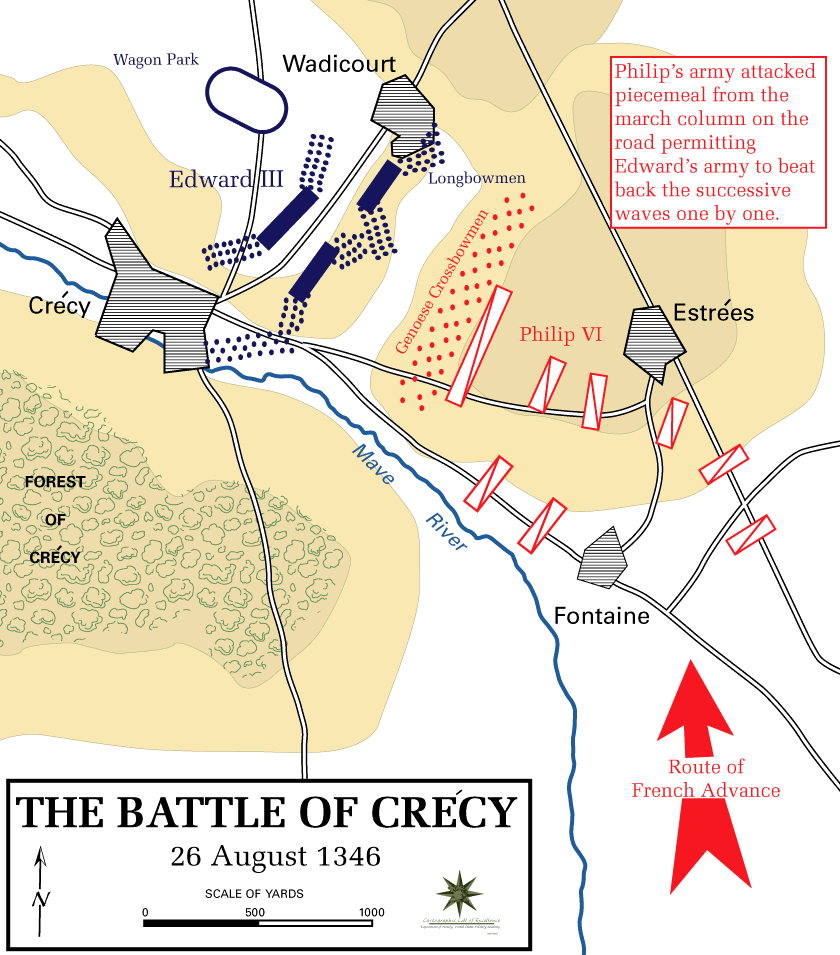 When the Genoese crossbowmen approached close enough they fired a series of volleys at the English. These proved ineffective compared to the English response which was devastated the Genoese and forced them to retreat. This in turn provoked some French Knights to cut down the retreating Genoese as for their cowardice. The failure of the Genoese is attributed to several factors. A brief thunderstorm before the battle had wet their bowstrings. The decision to start the battle early, meant that they fought without their pavise’s wooden shields behind which they could shelter while reloading. Also, the rate of fire of a longbow was far in excess of a crossbow, with a longbow-man loosing thre or four arrows to each crosw-bow bolt.
When the Genoese crossbowmen approached close enough they fired a series of volleys at the English. These proved ineffective compared to the English response which was devastated the Genoese and forced them to retreat. This in turn provoked some French Knights to cut down the retreating Genoese as for their cowardice. The failure of the Genoese is attributed to several factors. A brief thunderstorm before the battle had wet their bowstrings. The decision to start the battle early, meant that they fought without their pavise’s wooden shields behind which they could shelter while reloading. Also, the rate of fire of a longbow was far in excess of a crossbow, with a longbow-man loosing thre or four arrows to each crosw-bow bolt.
The French knights fell into confusion as they collided with the retreating Genoese. Continuing the attack, the French knights were forced to negotiate the slope of the ridge and the man-made obstacles. Cut down in large numbers by the archers, the felled knights and their horses blocked the advance of those to the rear.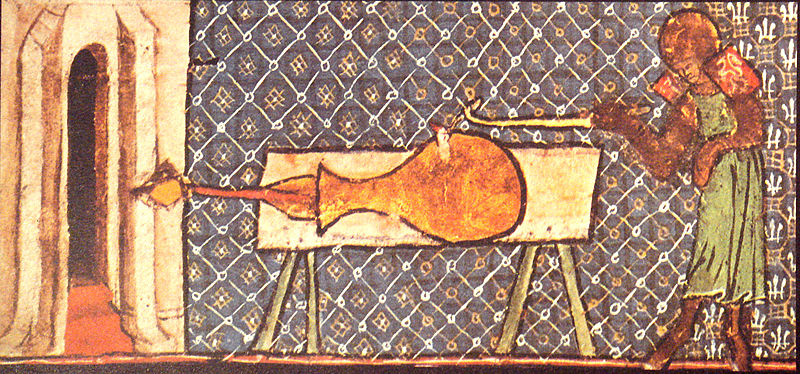
At some point in the battle Edward received a message from his son requesting assistance. This King Edward refused, stating “I am confident he will repel the enemy without my help,” and “Let the boy win his spurs.” As evening approached the English still held their position after repelling sixteen French charges, and felling their attackers with arrows. This was a huge English victory.
But, this interpretation is based on conflicting and fragmentary sources surviving from medieval records. Michael Prestwich pointed out the accepted interpretation is largely based on a selective choice about which sources to accept and which to reject. Even the location is uncertain. Geoffrey le Baker, refers to the field of Crecy, while Froissart writes that battle took place near a wood, somewhere between Crécy and La Broie, (five miles apart) and the king was on the mound of a windmill, at the rear of his army. While another source, Henry Knighton mentions another place name, Westglyse, identified as Watteglise, which is to the north-east.
Michael Prestwich also drew attention to Italian sources which give a very different version of the battle from the English and French, and for work done by Richard Barber in an as yet unpublished work on Crécy. These accounts are dismissed as being written at third hand and in a third country. But there were large number of Italian Genoese present at the start of the engagement. One of these accounts, by Giovanni Villani, who died in 1348, “stressed above all the English encampment of carts. The whole army, he said, in three battalions, was enclosed in a ring of carts, with a single entrance. Bombards were placed under the carts, and the archers shot from them, their arrows stacked in barrels.” The same account also includes a description of the effectiveness of the artillery “The English guns cast iron balls by means of fire…They made a noise like thunder and caused much loss in men and horses…The Genoese were continually hit by the archers and the gunners…[by the end of the battle] the whole plain was covered by men struck down by arrows and cannon balls.”
Professor Prestwich also quoted a second Italian account which dates from about 1360, and thanked Richard Barber for this. According to this account “Edward surrounded his army with iron chains, fixed to posts, in a horseshoe plan. Carts were then placed outside the chains, tipped up with their shafts in the air. Ditches were dug to reinforce the defences. Archers were hidden in the woods and cornfields – the author noted that as it was very cold in northern France, corn was not harvested until September, and in Crécy it was still standing (the battle was 26 August). The Genoese had to climb a slope to approach the English position. They could not shoot their crossbows and were mostly cut down. The English archers, advancing through the corn, shot at the French cavalry and did so much damage that the battle was lost. There is a telling detail in this account. The Genoese crossbowmen’s problem was not that their bowstrings were damp – this account explains that the difficulty was that the ground was so muddy and soft that they found it impossible to put the crossbows down and hold them there with the stirrup for reloading. “

These Italian accounts are usually discredited because it is hard to reconcile the accounts of the carts with known practices of the time.
But perhaps the Genoese were describing something they had not seen before and could not understand. What they may have been looking at is the vehicles needed to support a gun battery – the worlds first wagon lines. Guns need a lot of vehicles, to transport the pieces, protect the ready use ammunition from the elements, carry ammunition and all the services to support the men who serve the guns. Edwards battery may have needed the ability to cast or carve their own shot, carry and possibly manufacture gunpowder. Edward’s army was on the move. It had prepared to fight at Crecy and it may have made sense to retain the ammunition and stores needed for the guns close by rather than banishing them to the baggage train.
As artillery evolved all the vehicles were held in the wagon lines where they would be protected from enemy fire. But at Crecy there was no enemy artillery fire, and contrary to Hollywood, flaming arrows were not a normal medieval battlefield weapon. A separate wagon lines would be additional risks to an English army marching through hostile territory and faced with a superior mounted enemy. And the wagons and carts might also have provided cover for archers.
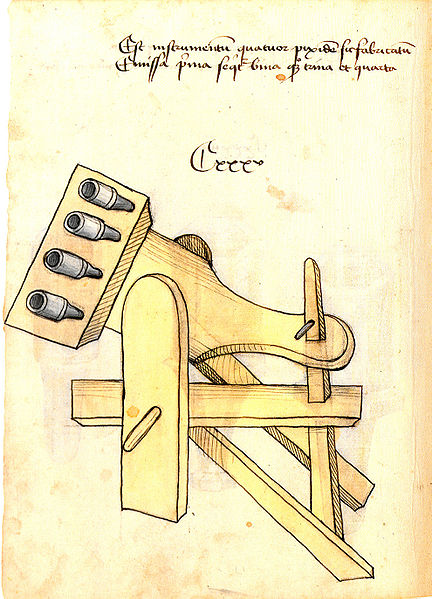
Edward’s army may have been accompanied by more than the four bombards. According to Michael Prestwich, Edward had ordered 100 small guns, known as ribalds, in October 1345. These had, it seems, wheeled carriages, and were probably multi-barrelled.
So maybe the battle of Crecy was the worlds first battle where artillery played a significant part in the battle. So far this is a bit of speculation based on an after dinner speech by an eminent historian and information sources hiding in plain sight on the Internet. But the early gunpowder era is interesting for lots of reasons, not least because modern archaeological techniques have been able to establish new facts about medieval battlefields from the evidence that gunpowder weapons leave. In the last couple of years Glenn Foard rediscovered the battlefield of Bosworth from the cannon balls. Perhaps it is time to start a project to search for cannon balls from Crecy that may have sunk in the wet soil.
